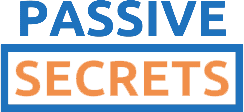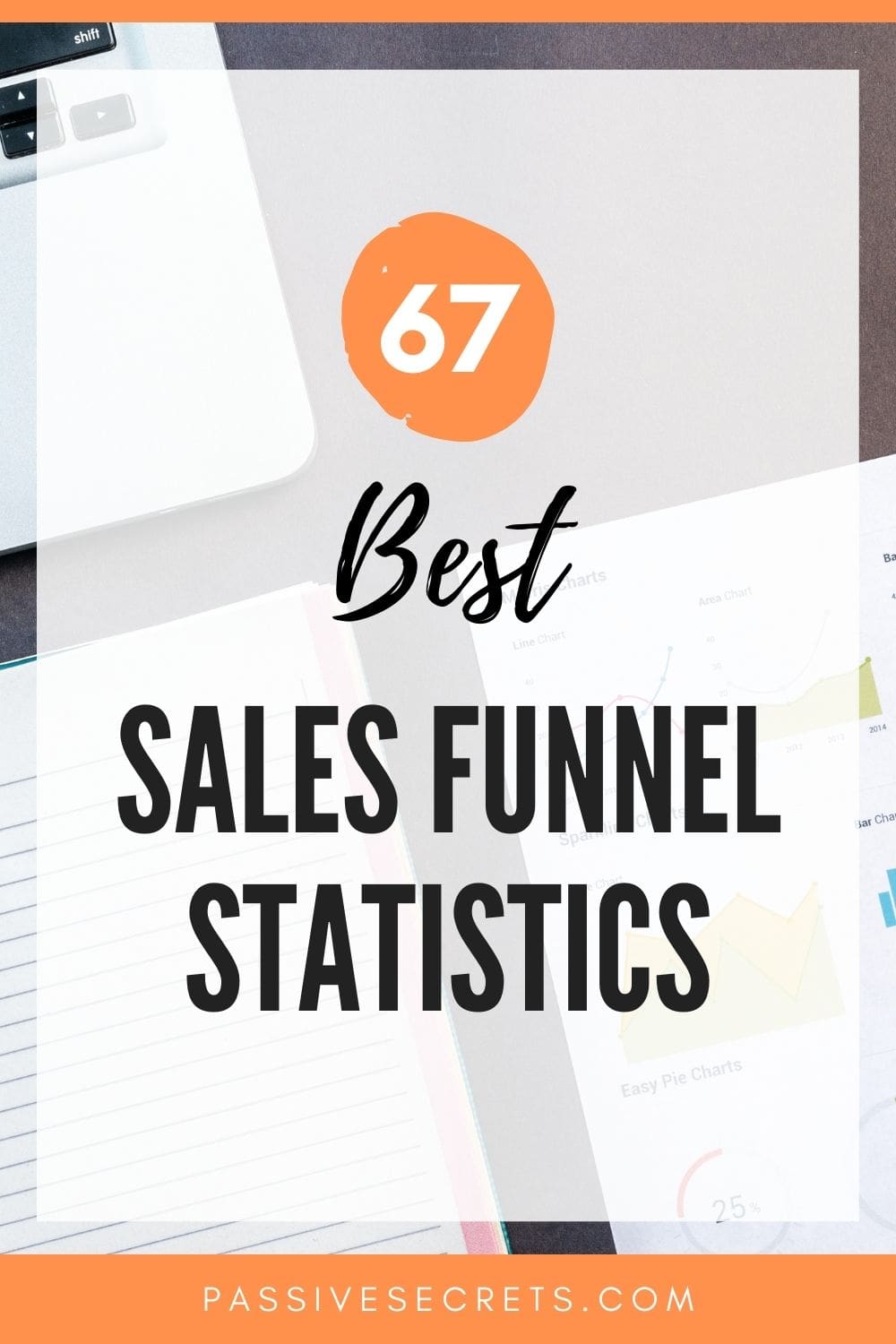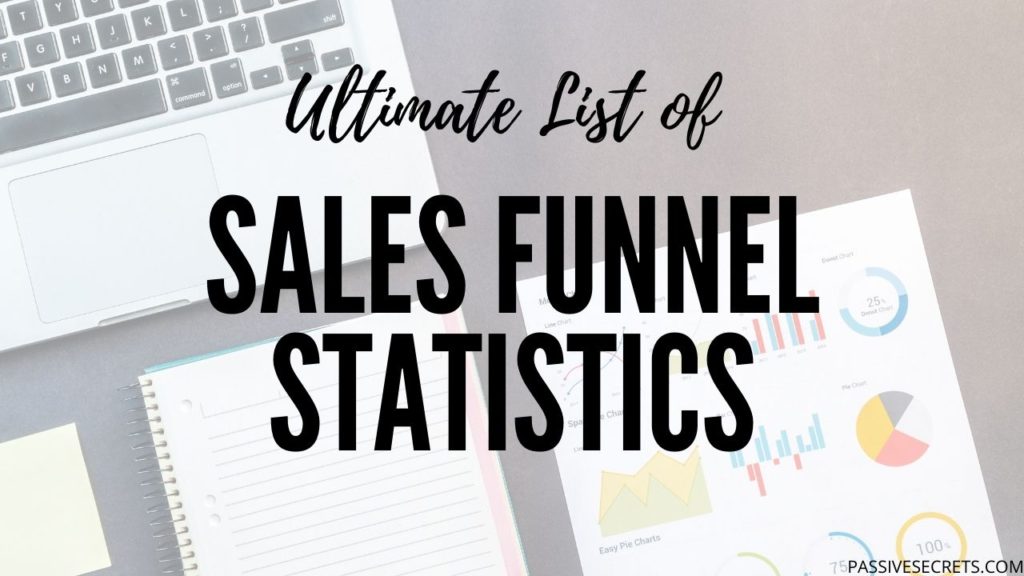
Over time, after consistently seeing most of my marketing and sales efforts go to waste, I became obsessed with improving my sales funnel conversion rates.
All I want is to get the best results for me and my clients.
So I took on the job of searching for the best sales funnel statistics so I could find out what’s already working for other successful marketers and sales funnel experts…
Luckily for me…and you:
I found data and research that can not only help you better identify gaps and opportunities in your sales funnel strategy.
But it also helps you visualize your customer sales journey from the awareness stage down to the conversion stage so you can easily ascend prospects up your value ladder.
Below are the latest and most up-to-date sales funnel statistics that can help you improve your marketing strategy.
Use them to make better-informed decisions, optimize your sales and marketing strategy, improve your conversion rates, and dominate your market.
Let’s get started:
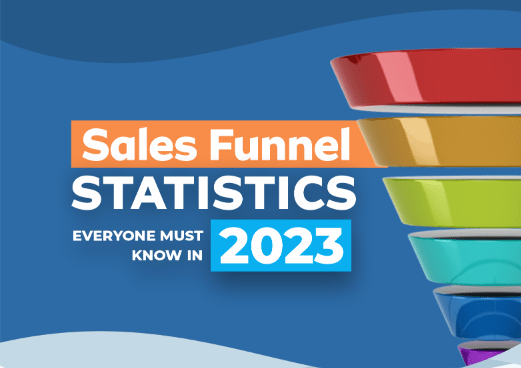
What Is A Sales Funnel?
A sales funnel is a journey a customer takes with a company, from becoming aware of their product to making a purchase. It has several stages: awareness, interest, desire, action, and loyalty. The goal of a sales funnel is to guide the customer and encourage them to buy. Companies use it to understand customers and tailor their efforts for maximum conversions.
Sales Funnel Conversion Rates Statistics
1. The average sales funnel conversion rate ranges from 3% to 7%. (source)
The formula to calculate a sales funnel conversion rate is: Total Conversions ÷ Total Leads in the Funnel × 100
2. The highest conversion rates are ensured when landing pages and funnels have a loading time of 0-3 seconds. (source)
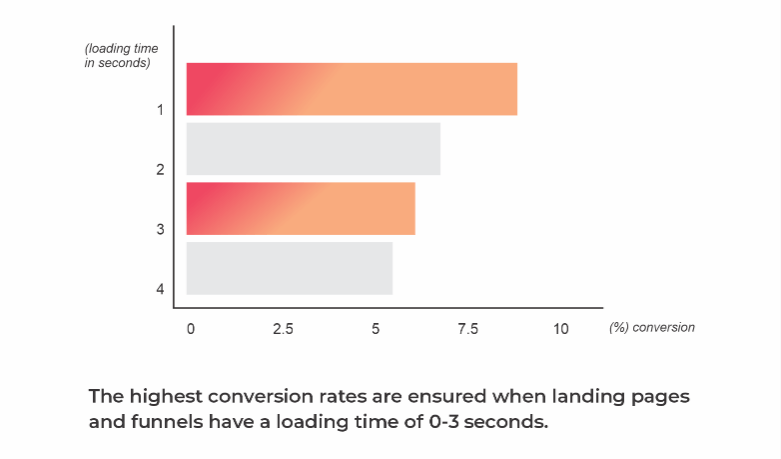
3. An e-commerce site that loads in a second has 2.5x higher conversion rates than one that loads in 5 seconds. (source)
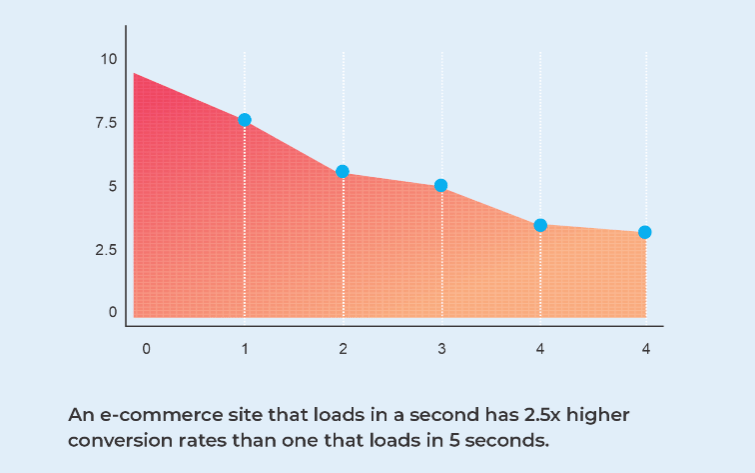
4. 96% of your website visitors are not ready to buy anything on their first visit. (source)
However, they will most likely provide their personal information in exchange for valuable content.
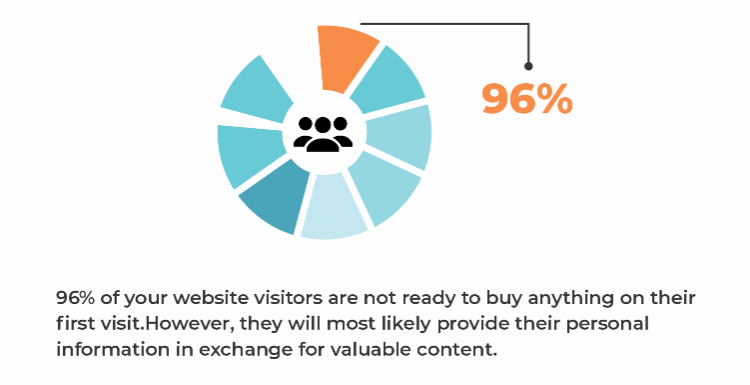
5. The average landing page conversion rate is 2.35% across all industries. However, the top 25% convert at 5.31% or higher. (source)
6. The best landing pages have conversion rates of 11.45% or more. (source)
7. The average desktop conversion rate is 1.9%. A conversion rate of 0.3% means you are at the worst ranking 20%. However, if you have a 4.7% or 7.2% desktop conversion rate, you are in the top 20% or 10%, respectively. (source)
8. The mobile e-commerce conversion rate in 2022 was 2%, driving 68% of the overall e-commerce traffic. (source)
9. The maximum average sales funnel conversion rate by traffic source is paid search at 2.9%. (source)
10. Facebook ads convert at around 9.21% on average. But note that this varies significantly and might not be the best benchmark to measure your ad performance against. For example, retail Facebook ads convert at only 3.26%, compared to fitness ads which convert at 14.29%. (source)
11. A well-defined middle-of-the-funnel (MoFu) engagement and lead management strategy can increase your response rate by about 4–10 times. (source)
12. The average e-commerce conversion rate as of late 2022 is 3.65%. The average conversion rate of all e-commerce market segments grew by 19.63% in July 2022. (source)
13. “Catering and Restaurants” have the HIGHEST average sales funnel conversion rate by industry at 9.8%. (source)
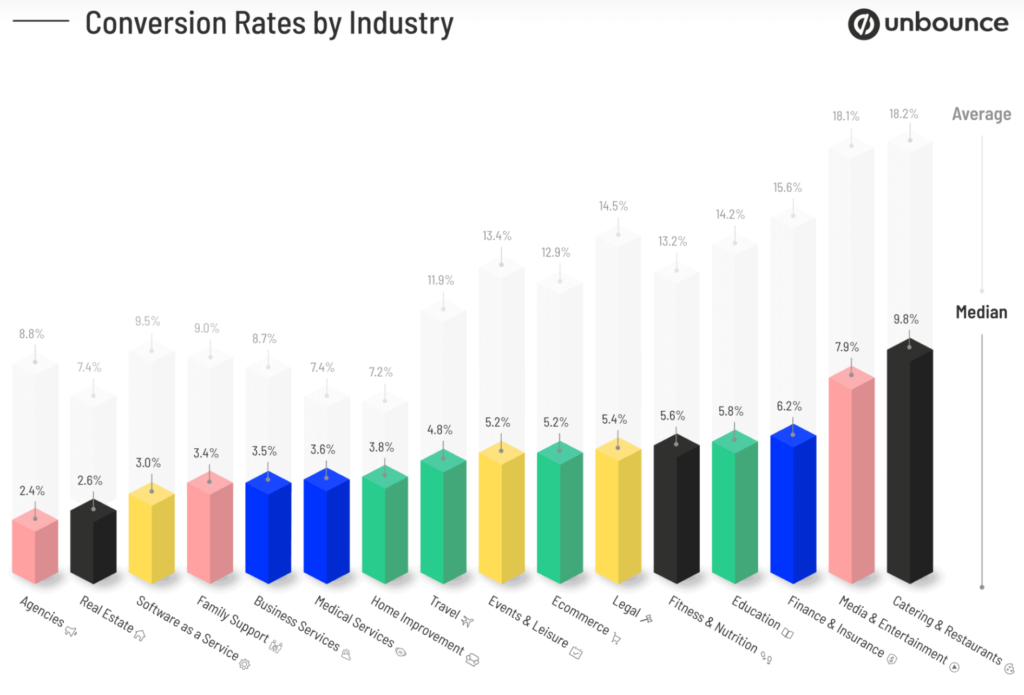
14. Only 22% of businesses are satisfied with their conversion rates. (source)
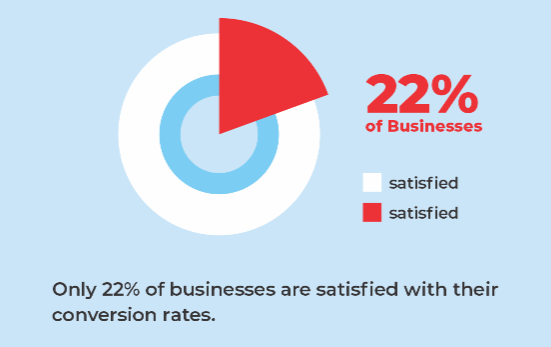
15. About 71% of marketers believe in their marketing strategy. (source)
16. 69% of surveyed marketers said their yearly marketing plan is to convert contacts and leads into paying customers. (source)
17. The highest B2B average sales funnel conversion rate by industry is professional/financial services at 10%. (source)
18. The lowest B2B average sales funnel conversion rate by industry is non-profit at 2%. (source)
19. Almost half (48%) of surveyed U.S online shoppers say they abandoned their shopping cart at checkout due to extra charges like shipping fees and tax fees. (source)
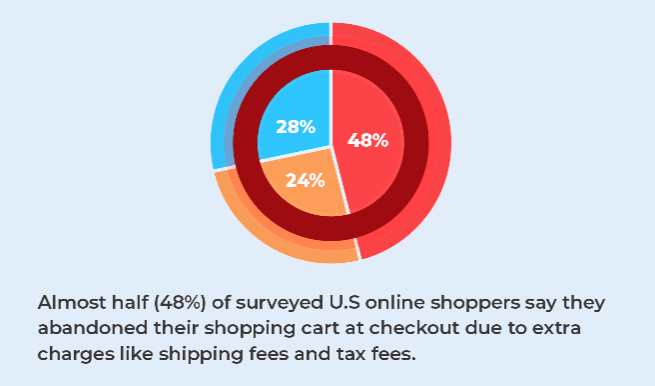
Statistics on Funnel Landing Pages
20. Featuring video content on landing pages and sales pages can increase conversion rates by as much as 86%.(source)
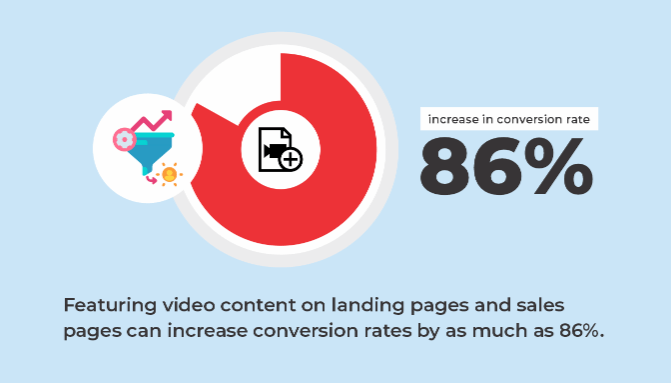
21. Product shoppers aged 18 to 24 and 35 to 44 expect eight images and four to five videos for each e-commerce product page. (source)
22. Landing pages and funnels that feature social proof convert 1.10% better than those that don’t. Landing pages with social proof convert at a rate of 12.50%, while those that don’t convert at 11.40%. The difference between both is 1.10%, which may seem like nothing but has a huge effect on sales. (source)
23. 36% of top landing pages feature testimonials. Additionally, 30% of top landing pages have a video, and 78% have their locations in the title tags. (source)
24. About 90% of your website’s visitors who read your headline also read your CTA. (source)
25. Out of the visitors that come to your website, only 20% actually read the content. The remaining 80% only read the headline. (source)
26. Landing Pages with only 1 Call-To-Action (CTA) have 1.6% more conversion power than those with two or more. Pages with one clear call-to-action (or link) convert at an average of 13.5%. However, pages with 2-4 links or CTAs only convert at an average of 11.9% of visitors. (source)
27. Featuring more than one offer on a landing page can decrease conversion rates by as much as 266%. (source)
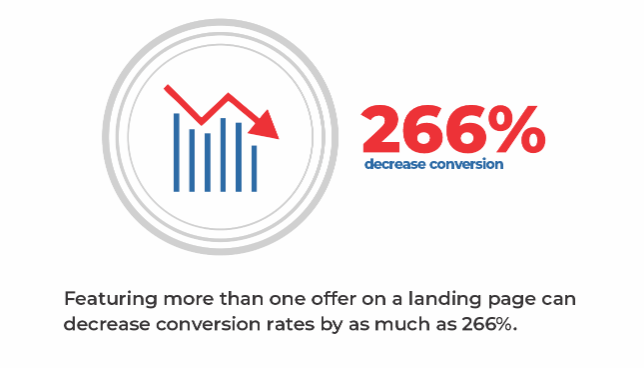
28. The highest-converting number of fields on a form is three, which means that if you ask for three pieces of information, you’ll have a 10% conversion rate. (source)
29. Companies with over 30 landing pages generate 7x more leads than those with less than 10. (source)
30. On the other hand, businesses or organizations with more than 40 landing pages generate about 12x more leads than those with less than 5. (source)
31. One of the most popular ways to test landing pages is through A/B split testing, with 60% of businesses deeming this method “highly valuable.” (source)
32. Good testing and targeting can help to increase conversions by as much as 300%. (source)
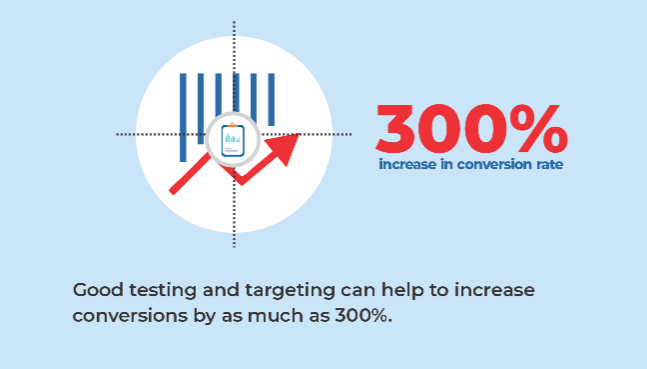
33. More than 20% of businesses that use sales funnels admit to not having a reliable testing method. (source)
34. The average internet user only spends an average of 37 seconds reading an article. This means you only have 37 seconds to get your user to either click on a link or take a specific action. (source)
35. 68% of surveyed B2B businesses say they use strategic landing pages to generate and nurture new leads. (source)
36. Acquiring a new customer is five times more expensive than retaining an existing one. A study showed that it is five times costlier and requires more time and marketing effort to acquire new customers than keep existing ones. It also showed that increasing the customer retention rate by 5% resulted in an over 25% increase in profits. (source)
General Business Sales Funnel Statistics
37. At least 570,000 websites are using at least one sales funnel-building software. A recent study analyzed 673 million websites to better understand the usage of the various sales funnel builders in the market and discovered there are over 570,000 live websites using sales funnel software. (source)
38. The most popular and used sales funnel builder software is ClickFunnels, having over 55.8% of the market share. Out of the 570,000 websites that use sales funnel-building tools, about 320,000 currently use ClickFunnels. (source)
39. 68% of businesses have not attempted to measure their sales funnel. Businesses ought not only to have a sales funnel, but they should also measure and track their sales funnel metrics regularly to identify opportunities for improvements. (source)
40. Businesses that provide an easy buying process are 62% more likely to close a high-quality sale. (source)
41. Top-converting businesses devote at least 5% of their budget to Conversion Rate Optimization (CRO). (source)
42. Upselling to existing customers is 68% more affordable than winning over new customers. (source)
43. Upselling products or services boosts revenue by an average of 10% – 30%. Also, about 95% of a company’s revenue often comes from upsells. (source)
Lead Nurturing and Conversion Sales Funnel Statistics
44. 79% of your leads won’t ever convert to sales. (source)
45. 73% of all leads are not sales-ready. (source)
46. 63% of leads who inquire about your business won’t convert for at least three months. However, 20% of generated leads take about 12 months or more before converting to paying customers. (source)
47. According to research, only 20% of sales leads are ever followed up. The other 80% are most likely lost due to no follow-up. (source)
48. Businesses that nurture leads produce 50% more sales at 33% lower costs. (source)
49. Emails for lead nurturing have higher Click-Through-Rates (CTRs). Emails sent out for lead nurturing purposes had an average click-through rate of 8%, significantly higher than regular emails, which had an average CTR of 3%. (source)
50. Personalized emails have an average open rate of 18.8% and a click rate of 2.1%. (source)
51. Having 10-15 landing pages increase leads by up to 55%. (source)
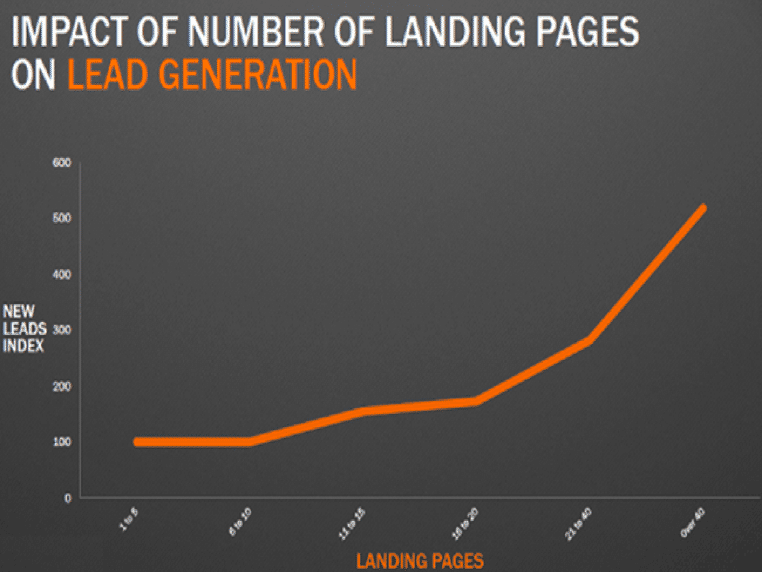
52. 61% of marketers rank lead generation as their number one challenge. (source)
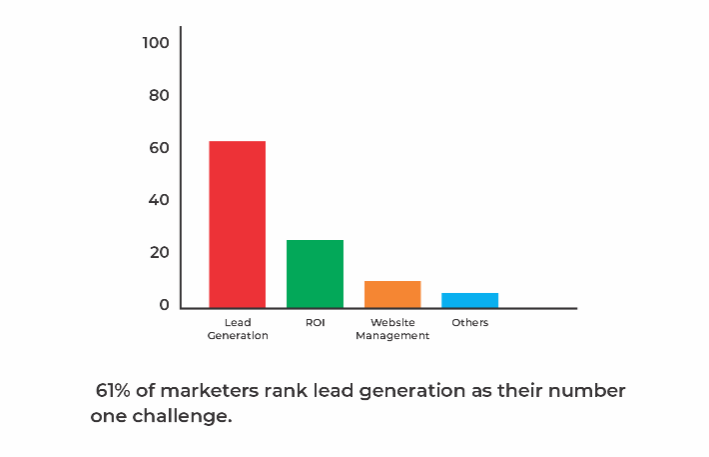
53. 53% of marketers spend at least half their budget on lead generation. Marketers are still concentrating more on lead generation, with 53% of them spending half or more of their entire budget on lead generation efforts. Only 34% of marketers spend a small amount of their budget on lead generation. (source)
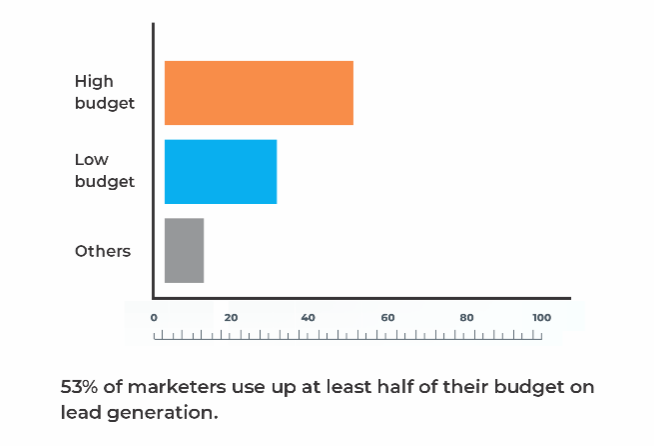
54. 80% of marketers think automating marketing generates more leads (and conversions). According to reports, 80% of marketers that make use of marketing automated software generate more leads (as high as 451% or more). And 77% of marketers convert more leads compared to those that don’t use automation. (source)
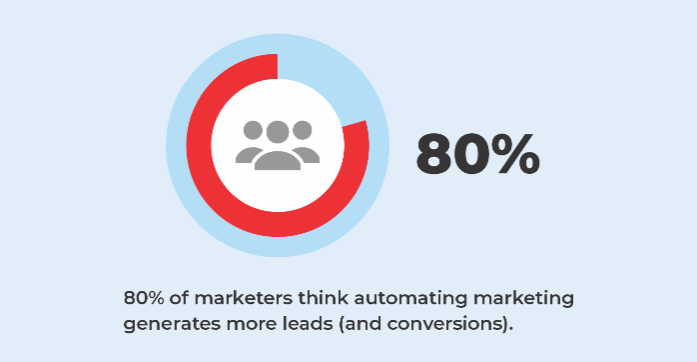
55. 93% of marketers say email is their top content distribution channel. (source)
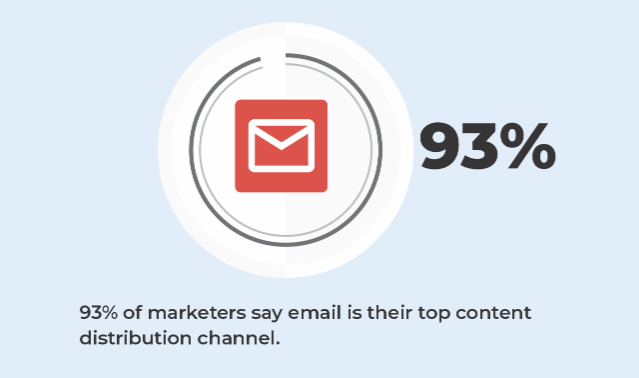
56. Email marketing is 40 times more effective than social media for customer acquisition. (source)
57. Email drives higher ROIs than any other lead generation tool. For each dollar you spend on email marketing, you can expect to earn $42 back. That’s an unbelievable 4400% ROI, higher than any other lead generation or marketing tool. (source)
58. 42% of businesses consider email to be one of their most crucial lead generation channels. (source)
59. 69% of marketers feel their top priority should be converting leads into customers. (source)
60. Statistics show that at least half (50%) of your prospects aren’t fit for what you sell. (source)
61. Budget constraints are the top reason most business deals fall apart. 55% of respondents in a survey said that ‘budget restraints’ were the number 1 or number 2 reason that they failed to close a sales deal. (source)
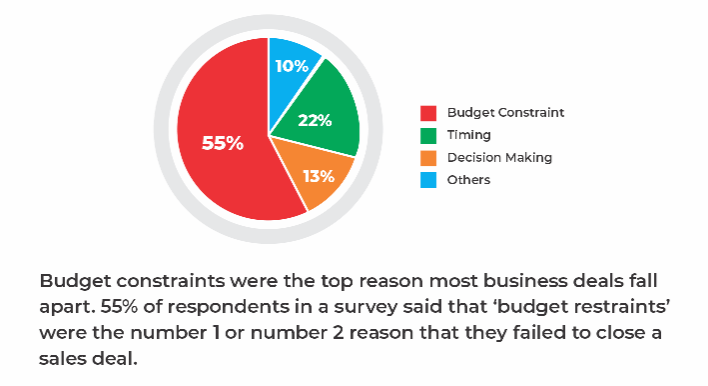
62. More than 41% of surveyed respondents identified phones as the most effective sales tool at their disposal. (source)
63. 31% of small businesses said competing with low-cost providers was their biggest selling challenge. 31% of businesses cited this as their biggest challenge, closely followed by challenges like “creating competitive differentiation” and “adding value to customer conversations.” (source)
Consumer Sales Funnel Statistics
64. “Where to buy” and “near me” mobile queries have grown by over 200% in the past two years. (source)
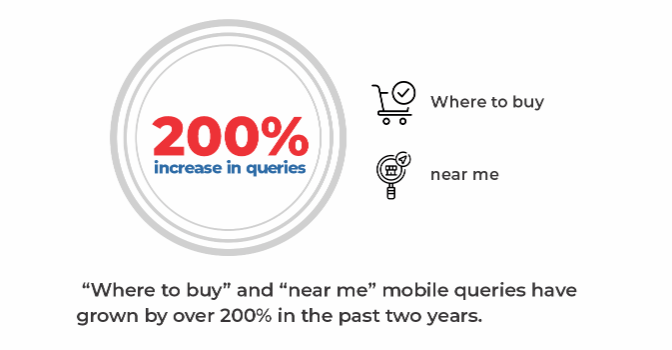
65. 59% of shoppers surveyed say that being able to shop on mobile is essential when deciding which brand or retailer to buy from. This means that businesses that have their products accessible through mobile app stores would get consistently high patronage from most shoppers using mobile phones. (source)
66. 51% of shoppers interviewed say they use Google to research a purchase they plan to buy online. (source)
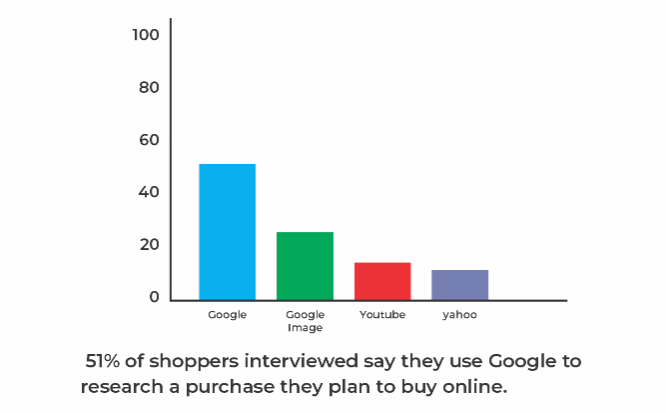
67. About 95% of online shoppers read online product reviews before purchasing the product. (source)
68. 50% of US internet users say receiving product recommendations related to their interests appeals to them. While 45% say, this content is the type they get most frequently. (source)
69. One in five respondents said they felt understood when a brand or retailer recommended relevant products. A survey conducted in January 2019 illustrated that consumers are looking for need-based content and understanding. (source)
70. 85% of consumers’ product information and pictures are essential when deciding which retailer or brand to patronize. (source)
71. 63% of consumers need to hear a company’s claim about 3–5 times before they believe it. (source)
72. 53% of sales reps actually meet or exceed their sales quotas. (source)
73. 34% of US digital product users make a purchase they had not previously intended to due to enhanced recommendations. (source)
Closing Sales Statistics
74. Only 20% of salespeople actually make over 80% of the sales and close the deals. Sales closing is all about convincing a lead to make a purchase or take final action. It is about turning a prospect into a paying customer. (source)
75 About 70% of sales reps say CRM tools are very important because they help them in closing deals. 69% tie for both sales engagement software and sales intelligence software. (source)
76. 48% of surveyed buyers say they won’t close a deal with sellers who give misleading information. (source)
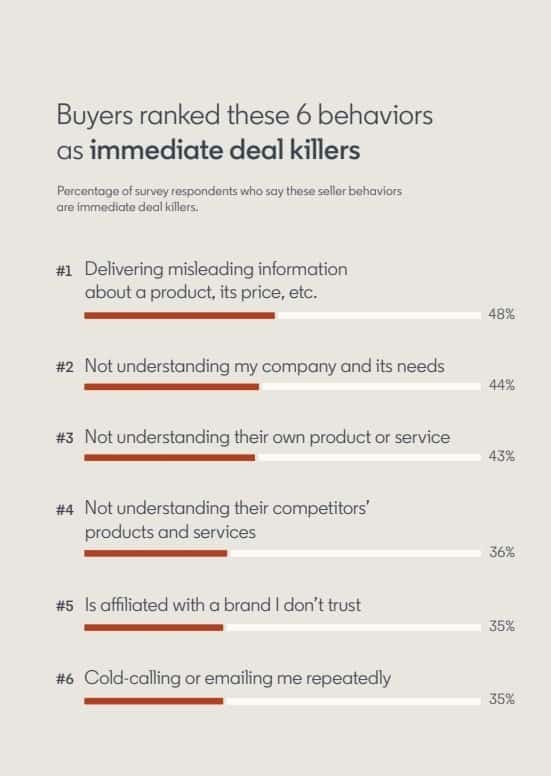
77. About 54% of salespeople say they can track a closed deal down to social media engagement. (source)
78. 62% of buyers want to hear from marketers actively looking for solutions to their problems. Also, 82% of consumers still prefer to meet with sellers when these sellers reach out to them. This shows that cold-calling and cold-emailing are still effective. (source)
Sales Pipeline Statistics
79. Businesses with sorted sales pipeline management had 28% growth more than those that didn’t. Sales pipeline management involves managing and tracking both the new and existing sales opportunities across all sales pipelines. (source)
80. Although a sales pipeline is very important, 44% of business executives believe their company is ineffective at managing their sales pipelines. (source)
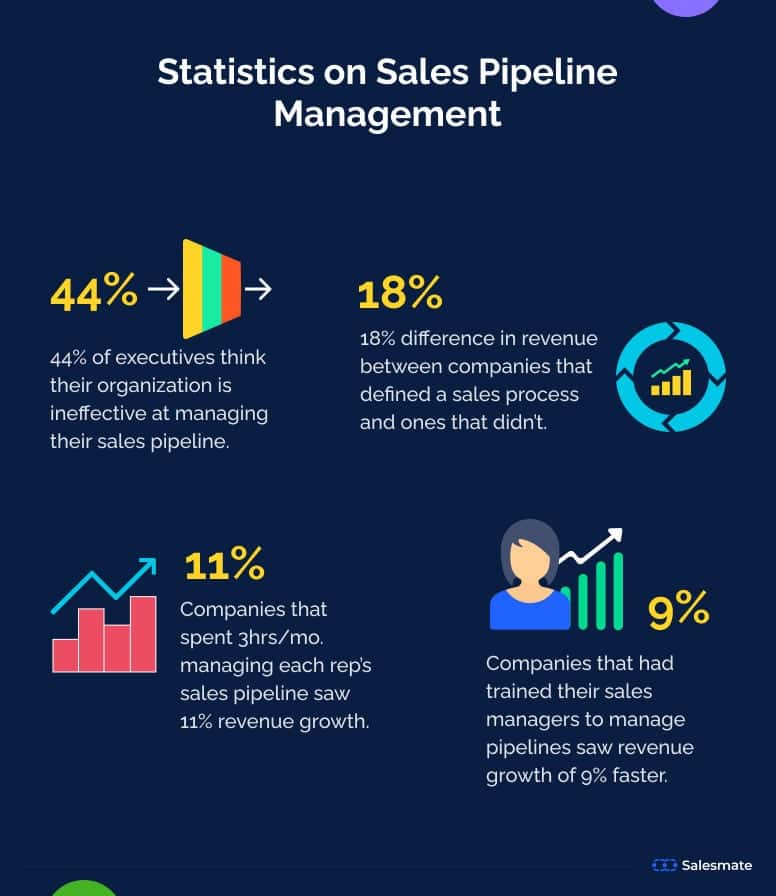
81. 46.2% of sales reps say that a lack of qualified leads is a top barrier to sales effectiveness. 27% believe that long sales cycles are the main barrier. (source)
82. Almost 30% (28.3%) of sales managers believe optimizing their sales process should be a top sales management priority. (source)
83. 77% of marketing professionals say they track their marketing and sales funnel performance as part of their marketing analytics. (source)
My Final Thoughts And Takeaways
Here are a few points I took away from these sales funnel statistics:
- Your sales funnels and pages should load as fast as possible.
- Video content best helps to build trust and improve conversions.
- Use testimonials as much as possible in all your landing pages and funnels.
- Each of your pages should have only one call to action and offer.
- Never get tired of A/B testing and tracking your conversions.
- Following up and nurturing your leads cannot be overemphasized.
- Email marketing continues to be the most valuable part of any sales funnel strategy.
- Your focus should be educating your prospects and providing them with relevant offers.
- If your business isn’t online and doesn’t have a sales funnel, you are missing out on a ton of sales.
This may seem like a lot, especially when you must also keep up with the latest trends and statistics in marketing and sales funnels.
However, your business can quickly improve its marketing and sales by leveraging these helpful sales funnel statistics.
And I will do my best to keep this page updated with the best possible sales funnel statistics, and I will add new ones as I find new data and research in the world of sales funnels.
Let me know in the comments if any of these stats surprised you or if you identified any mistakes you are making in your business and how you plan to fix them.
Thanks for reading.
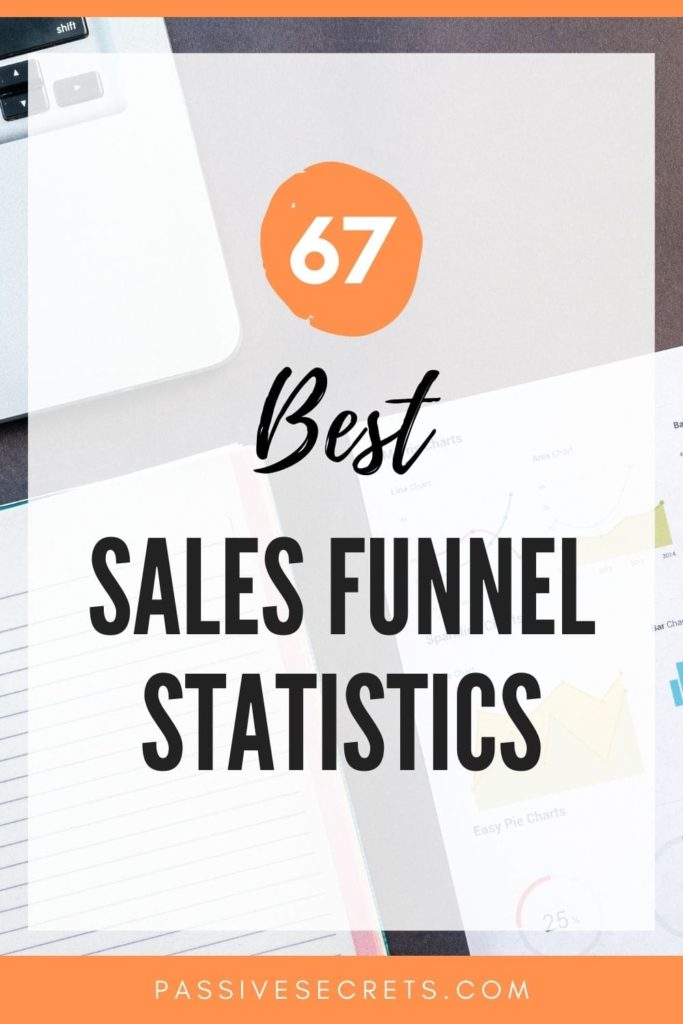
Related Posts:
- Ultimate List of Performance Management Statistics & Trends in 2024
- 47+ Important 4-day Work Week Statistics You Must Know In 2024
- 73 Revealing Workplace Distraction Statistics [2024]
- 41+ Important Communication Skills Statistics & Trends For 2024
- 46 Crucial Amazon Advertising Statistics, Trends & Strategies For 2024
- 29+ Important Fear of Public Speaking Statistics To Help You In 2024
- 37+ Best Copywriting Statistics & Trends to Help You in 2024
- 51+ Important Podcast Advertising Statistics To Know In 2024
- 101+ Important Social Media Advertising Statistics & Trends To Help You In 2024
- 100 Top Digital Marketing Vs. Traditional Marketing Statistics To Know In 2024
- 53 Most Important Workplace Communication Statistics To Know In 2024
- 47 Insightful Multi-Level And Network Marketing Statistics, Facts & Trends
- 43 Virtual Event Statistics All Marketers Need To Know
- Latest Multichannel Marketing Statistics and Trends
- 51+ B2B Lead Generation Statistics, Facts, Trends, And Benchmarks
- 45+ Latest Omnichannel Marketing Statistics, Data, Trends, and Strategies
- 50 Trade Show Statistics and Trends to Boost Your Business in 2024 and Beyond
- Pay-Per-Click Statistics, Trends & Benchmarks (Amazon, Social, Google & Search Ads Stats)
- 47 Useful Organic Vs. Paid Search Statistics To Know In 2024
- 43 Direct Mail Marketing Statistics, Trends, and FAQs For 2024
- 51+ Teamwork & Workplace Collaboration Statistics To Boost Your Employee Performance
- 50+ Latest Life Coaching Statistics And Huge Trends In 2024
- 40+ Top Workplace Conflict Statistics You Should Know [2024]
- 36 Interesting Social Worker Burnout Statistics for 2024
